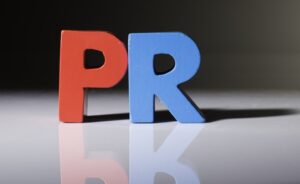Creating a strong tech PR program involves developing strategies that effectively communicate the value and impact of technology products and services to target audiences. Here are 25 key components that can contribute to a robust tech PR program:
- Clear Objectives: Define what you want to achieve—whether it’s brand awareness, product adoption, or thought leadership.
- Target Audience Identification: Identify who you want to reach—whether it’s consumers, industry experts, investors, or media.
- Key Messaging: Develop clear and compelling messages that highlight your technology’s unique value propositions and benefits.
- Media Relations: Build and maintain relationships with key tech journalists, bloggers, and influencers who cover your industry.
- Press Releases: Craft and distribute well-written press releases for significant company updates, product launches, and other newsworthy events.
- Media Kits: Prepare comprehensive media kits with company information, product details, and high-resolution images to make it easy for journalists to cover your story.
- Thought Leadership: Position your executives as thought leaders through bylined articles, speaking engagements, and interviews.
- Content Marketing: Create valuable content such as white papers, case studies, and blog posts that demonstrate your expertise and provide insights into industry trends.
- Social Media Strategy: Use social media platforms to engage with your audience, share news, and participate in relevant conversations.
- Influencer Partnerships: Collaborate with industry influencers to amplify your message and reach a broader audience.
- Media Training: Prepare your spokespeople with media training to handle interviews effectively and communicate your key messages.
- Crisis Management: Develop a plan for managing potential PR crises, including how to respond to negative press or product issues.
- Event Management: Organize and promote events such as product launches, webinars, and industry conferences to engage with your audience directly.
- SEO Optimization: Optimize press releases, blog posts, and other content for search engines to increase visibility and drive traffic.
- Metrics and Analytics: Track the performance of your PR activities using metrics such as media coverage, social media engagement, and website traffic to assess effectiveness.
- Customer Testimonials: Showcase positive feedback and case studies from satisfied customers to build credibility and trust.
- Competitive Analysis: Monitor your competitors’ PR activities to understand their strategies and identify opportunities to differentiate yourself.
- Partnerships and Alliances: Form strategic partnerships with other companies or organizations to enhance your credibility and extend your reach.
- Pitching Stories: Develop compelling story angles and pitch them to journalists and media outlets to secure coverage.
- Industry Awards: Apply for industry awards and recognitions to gain credibility and enhance your brand’s reputation.
- Engagement with Analysts: Build relationships with industry analysts who can provide valuable insights and endorsements.
- User-Generated Content: Encourage customers to share their experiences and create content that can be used in your PR efforts.
- Employee Advocacy: Engage your employees as brand ambassadors to share company news and updates within their own networks.
- Internal Communication: Ensure that your internal team is informed and aligned with PR activities and messaging.
- Regular Reviews and Adjustments: Continuously review and adjust your PR strategies based on performance data, market changes, and evolving company goals.
Implementing these components effectively can help establish a strong presence in the tech industry, foster positive relationships with media and influencers, and achieve your PR objectives.




